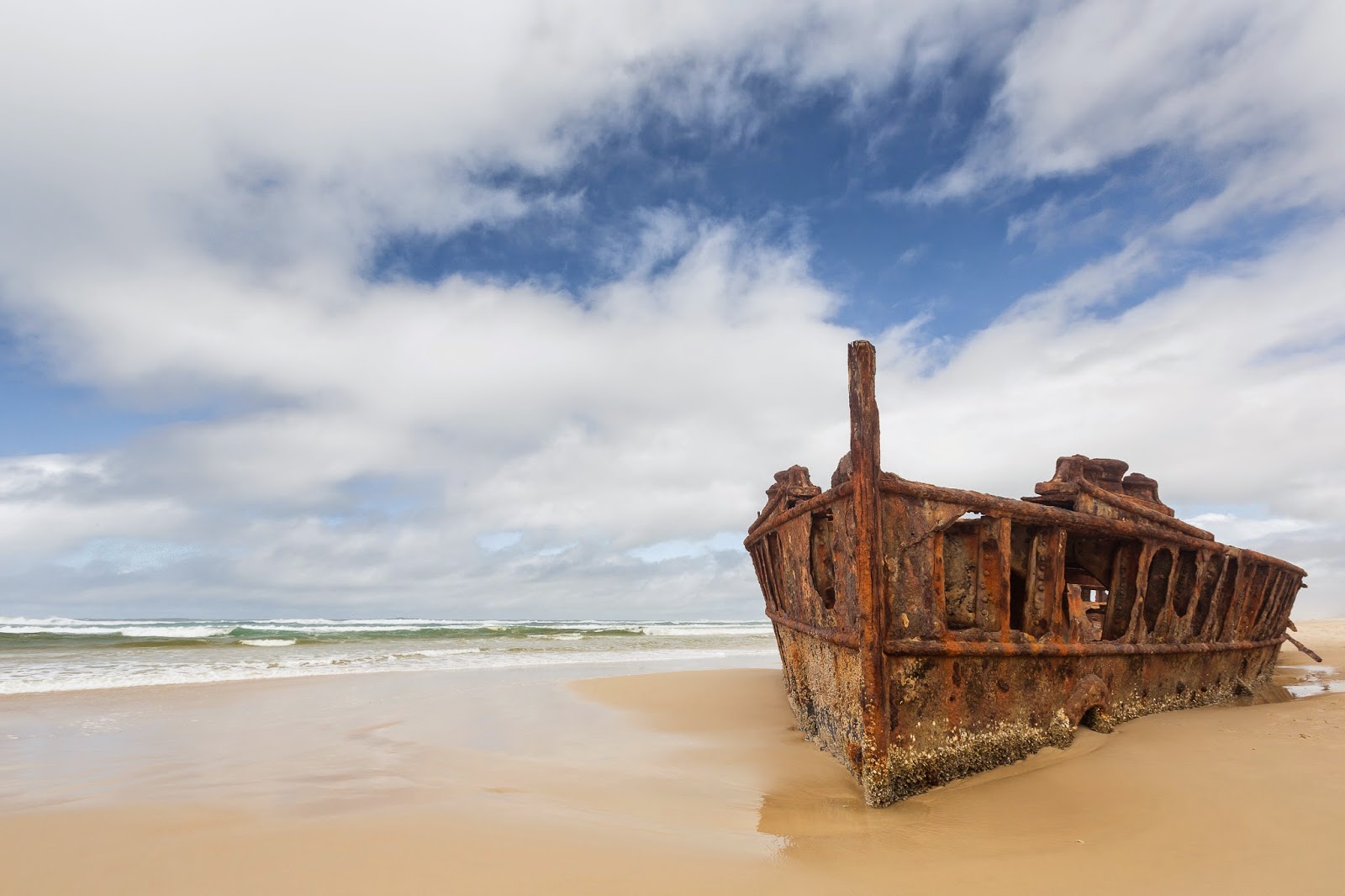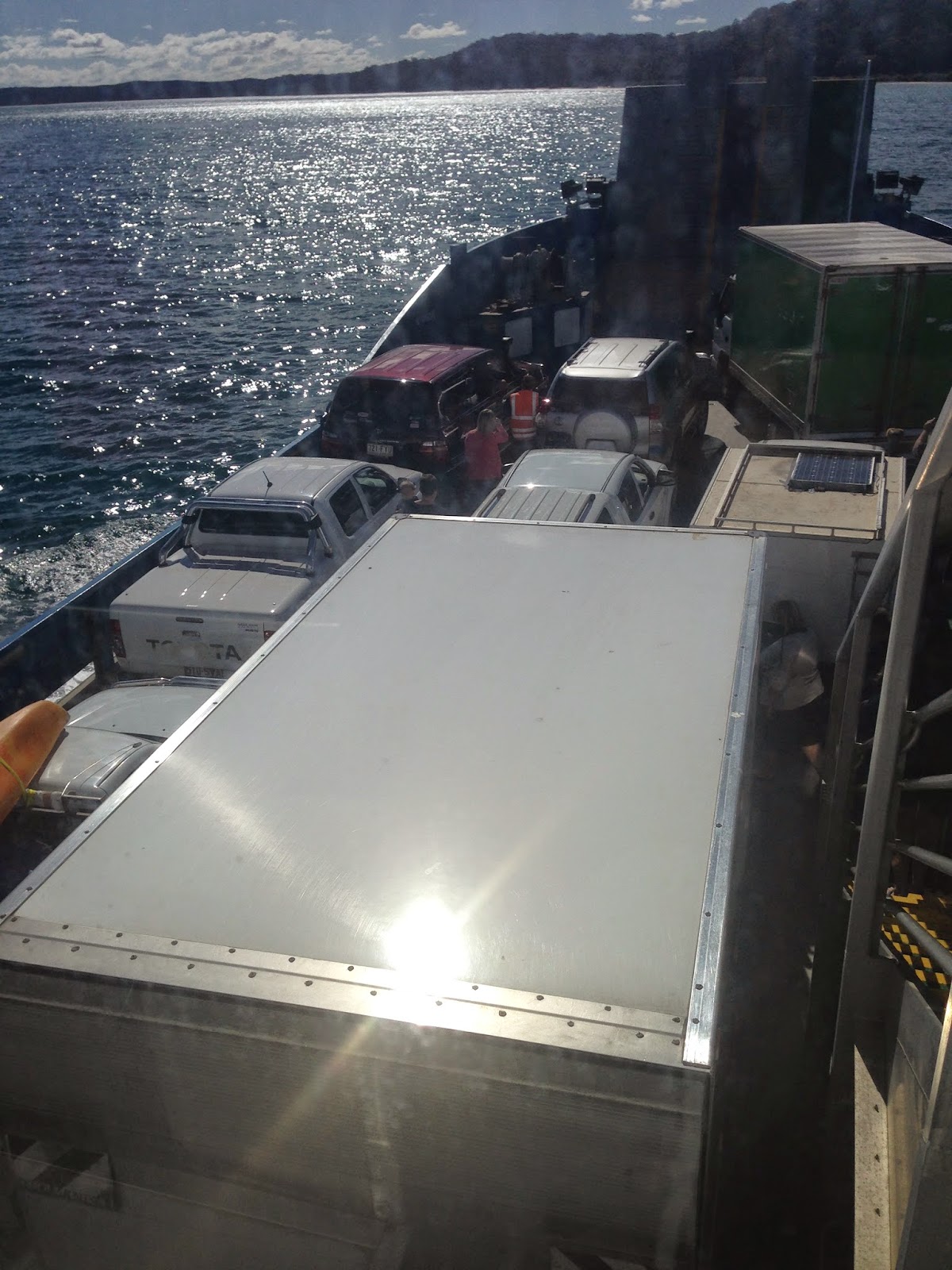 Day 2 - Start with the tides.
Day 2 - Start with the tides.(are you looking for day one?)
A quick study of the tides and our deadline of a barge leaving at 5pm from Kingfisher Bay Resort goes a long way to dictating how we shall spend our day.
Low tide is 8:38 am, so the sooner we are on the beach, the more beach we will have. Using the app, we can see that at about 2 hours before high tide we will have a tide of 1.48m. That's only 3cm below the high tide of the night before - taking that into consideration we see that at 2 hours before high, there will likely be almost no firm beach to drive on.
Breakfast, load up and check out and onto the beach.
First stop is the famous Eli Creek.
 |
| Crossing Eli Creek is best done at Low Tide |
 |
| Plenty of room for entertainment. |
 |
| Maheno Wreck is just up the beach from Eli Creek |
 | ||
| The ever changing face of the Maheno. |
 Just up the beach is the Maheno Shipwreck, we must have stopped here hundreds of time, but we will again. Watching the slow change of the wreck over time has been fascinating and always worth a visit to explore. The wreck is very unstable, please keep your kids off it.
Just up the beach is the Maheno Shipwreck, we must have stopped here hundreds of time, but we will again. Watching the slow change of the wreck over time has been fascinating and always worth a visit to explore. The wreck is very unstable, please keep your kids off it.

The tide has been coming in all this time, and it's probably time to head for an Ice Cream at the Fraser Island Retreat (Happy Valley).
 |
| Cornwell's Break Road can be a bit rougher than most roads, but it's a worthwhile drive. |
 |
| Lake McKenzie |
 |
| Lake McKenzie |

It will be getting well into the afternoon by now and time to head to the SandBar and Jetty Hut at Kingfisher Bay Resort. If you have to wait, and air up your tyres somewhere, this is the place to do it.
While you are waiting;
- check out the resort
- go fishing from the jetty
- maybe even hire a Segway
At about 15 minutes before departure we will be asked to make our way down the Jetty (we drive forwards onto the barge, and reverse off) and onto the barge.
The trip back to River Heads takes about 45 minutes.
There's so much more of Fraser Island to see, 2 days doesn't go close to doing it justice, especially when the tides are 'awkward'.
We use Hema Maps, General Tyres, TJM Products, Goal Zero Solar, Xray Lights and have a great relationship with our friends at Kingfisher Bay Resort.




























